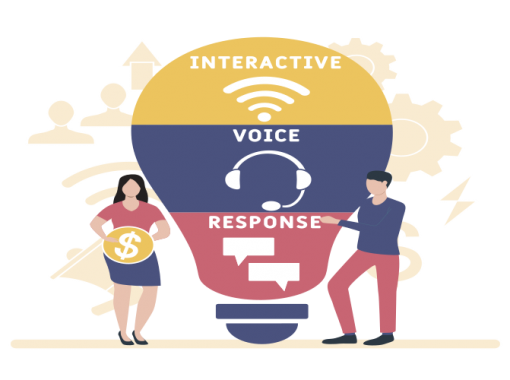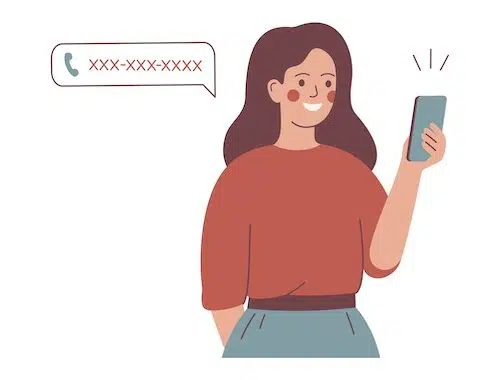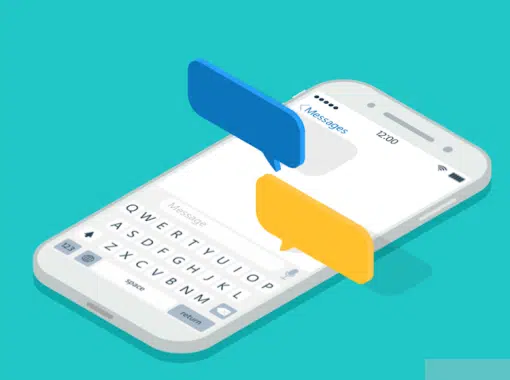
Has this ever happened to you?
You’re calling your credit card provider to inquire about qualifying for a lower monthly interest rate. However, each person that picks up the phone transfers you to another agent who can’t seem to take care of your problem. You’re tossed from person to person before you become aggravated and hang up.
Talk about a bad customer experience.
Companies of all sizes are looking to alleviate this frustrating process and streamline customer communications by implementing interactive voice response (IVR) technology into their call centers or offices.
Interactive voice response systems allow callers to interact with the various menu options via their phone’s touchpad or voice. These systems can be fully customized to complete specific tasks, such as directing callers to specific extensions or completing a task such as updating account records — all without speaking to a representative.
How Does an Interactive Voice Response System Work?
Today’s sophisticated interactive voice response systems work like this: they enable marketers to construct specific audio and touchpad pathways with which callers can interact.
Based on the caller’s responses, the system identifies which pathway or process to follow. Options can include everything from directing a caller to a specific employee’s phone line or pulling up account information from the customer relationship management platform. And, that’s only the beginning.
Most interactive voice response systems are used in conjunction with human operators to provide callers with a complete experience. Among the most common ways to use an IVR system include:
- Making payments. Companies can accept compliant and secure credit/debit card payments over the phone. This can be completed on a self-service or agent-assisted basis.
- Banking tasks. Callers can move money in between accounts via an IVR system connected to their banking organization. This system can also deliver accurate banking information regarding current account balances and transactions.
- Retail orders. Callers looking to make a purchase with a retail store, restaurant, or coffee shop can also do so through an interactive voice response system. The system is connected to the store’s point-of-sale system and can accept secure payments over the phone.
- Appointment reminders. Interactive voice response systems also have an ‘outbound’ option, which enables the system to contact the customer. This is perfect for automated appointment reminders via phone call and/or text. Dentists, doctors, automotive shops, lawyers, and businesses operating on an appointment basis benefit greatly from this convenient service.
- Weather conditions. IVR systems can also be used to deliver up-to-date weather conditions to travelers. Perhaps you’ve seen a road sign or billboard prompting drivers to call ahead and check the weather conditions for their destination.
- Check-in processes. Many businesses in the healthcare and tourism industries have begun to rely on interactive voice response systems to accurately and safely expedite the check-in process. Through an automated reminder sent to the customer, callers can easily and quickly check-in to their hotel or for their upcoming appointment entirely over the phone.
- Surveys/televoting. Among the largest uses of IVR systems are surveys and televoting processes. Callers can place their vote, such as for television shows with audience voting participation, all by calling a phone number and interacting with the system. Additionally, many companies have found that survey participants feel more comfortable answering questions through an IVR system than if talking to a human survey taker.
Interactive Voice Response vs. Automated Attendants
It is important to note the difference between an interactive voice response system and automated attendants.
Automated attendants, also known as virtual receptionists, are systems that automatically transfer callers to an extension without the need for a physical, human receptionist. These are most commonly seen in the form of a touchpad menu system (“Press 1 for Sales, press 2 for…”).
However, interactive voice response systems can be used in tandem with an automated attendant to better direct and service callers.
The Undeniable Benefits of Using an IVR System
Businesses that adopt an interactive voice response system experience several advantages such as:
Improved Customer Experience
All of an IVR system’s features work to provide a better customer experience for callers. From directing them to someone they need to speak with or helping them complete a task (e.g., a banking transaction), interactive voice response systems can be customized and optimized to offer a seamless phone experience.
Additionally, since human operators are not required for an IVR system, customers can call any time of day and receive the information they need. The sheer convenience of such a system is a benefit for callers as well!
Solution-Oriented
More often than not, customers call your business with a problem or a question that needs to be answered. Instead of sending an agitated customer in circles between agents, the interactive voice response system is designed to find the fastest and most effective solution for the caller (based on their responses to the prompts).
If a solution cannot be reached, IVR systems offer the option for the caller to submit a “call back” request and have an agent contact them as soon as possible.
Reduces Operational Costs
A study by McKinsey found that interactive voice response systems save companies an average of $100 million annually when compared to the labor and human resources costs associated with managing a human employee.
By not needing to employ a full call center of receptionists, your company can save money in the long-run and ensure that callers are never left waiting on hold for the next available representative.
Additionally, the agents you do employ will work far more efficiently, as their time will be spent managing the right concerns rather than directing a caller to the correct place.
Productive Workforce
On top of reduced operational costs, your existing team will be more productive when they don’t have to sit on the phone all day. Instead, they can focus their energy on bringing in more revenue and growth for your business!
Enhanced Brand Reputation
When you have to sit on hold or be transferred multiple times on a single phone call, how highly do you think of that company or brand? Chances are, your perception of the brand is diminished.
Through a straightforward and simple interactive voice response system, callers can complete their transaction or task fast. In turn, this rapid conflict resolution ensures that callers associate your brand with a positive experience.
How Interactive Voice Response Systems and Telemarketing Work Together
Interactive voice response systems have an outbound feature, which numerous telemarketing companies use to their advantage.
An outbound interactive voice response system distributes messages to customers. These messages can be delivered in the form of a voicemail, text message, or automated phone call.
For example, a doctor’s office can send a scheduled call or SMS message to a patient reminding them of their upcoming appointment. Through this phone call, the patient can update their insurance information, pay their copay, and complete other relevant check-in tasks thanks to the interactive voice response system.
A productive outbound IVR system is utilized to provide a personalized customer experience, unlike telemarketing efforts of the past. When connected to a customer relationship management (CRM) system, an outbound IVR tool can offer experiences respective to the customer’s needs or account details.
As a result, many outbound interactive voice response systems can connect with customers in a way other platforms, such as social media, are incapable of. This results in a long-term relationship with the customer, which of course, turns into more revenue for the company overall.
It’s Not a Robocall!
Outbound interactive voice response systems aren’t sending out mass robocalls. They’re designed to engage the consumer on a preferred channel —their phone!
No one enjoys receiving a robocall, and savvy telemarketers know this. Instead of reaching out to a random individual, telemarketers are sending personalized messages, reminders, and offers to subscribers or existing customers based on their interests and needs.
By forfeiting the outdated mass message approach to telemarketing or outreach efforts, companies are forging lasting relationships with potential clients rather than alienating them with unwanted phone calls.
How to Make Your IVR System Work for Customers
Now, simply configuring an interactive voice response system isn’t going to generate more leads or happier customers. You must configure the system to work for customers.
Recent research found that 61% of consumers find interactive voice response systems frustrating. But why? Two-thirds of survey respondents said it was because they were forced to listen to options that weren’t relevant to their needs.
Instead of haphazardly setting up an IVR system solely for the sake of having one, keep these quick tips in mind:
- Address common customer concerns first. Rather than listing every extension possible, set up your IVR system to address common customer needs first. This can include setting up appointments, making a transaction, or updating account information.
- Offer the option to speak to a representative. You could set up the world’s most convenient interactive voice response system, and some clients still won’t want to use it. Always offer callers the option to speak to a human representative. And, if that’s not possible due to hours or staffing constraints, direct them to a specific email address or chatbot that can assist with their situation.
- Don’t overcomplicate it. If you think your IVR system has too many steps, it does. Keep your processes and menu options as simple as possible, while still keeping caller concerns in mind.
Pair Your Interactive Voice Response System with a Call Tracking Number
As a business, you want to provide your audience with an exceptional experience. However, if you don’t understand how your marketing efforts — such as a telemarketing strategy — are working, you won’t know what aspects of your experience to fix.
By pairing your interactive voice response system with a call tracking phone number, you’ll fully comprehend how callers are finding out about your company and interacting with your IVR system. Most IVR systems also offer in-depth reporting features to show you how callers are navigating your menu. In combination with call tracking data, your telemarketing team will have a complete understanding of your successes and what areas need to be reworked.
Sign up for your call tracking number today!












